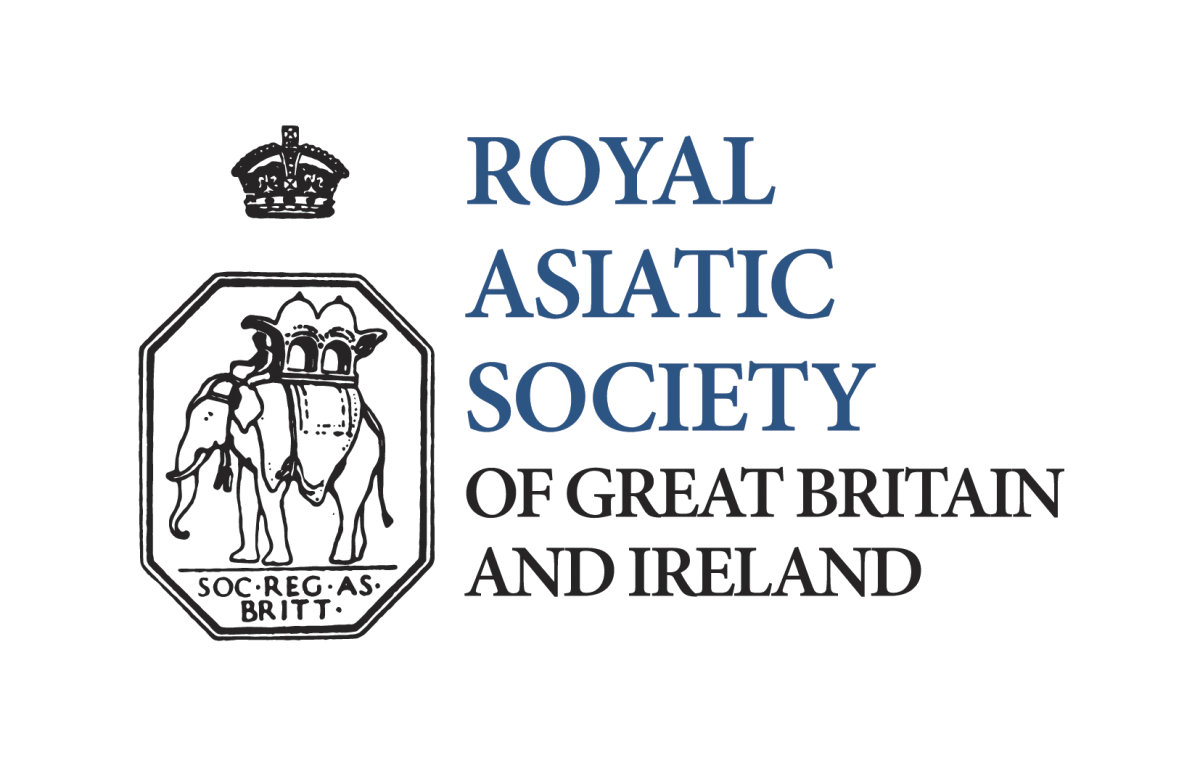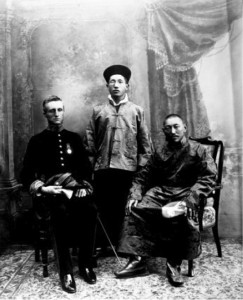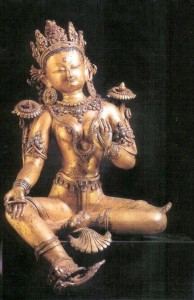JRAS Guidelines
1. Manuscript preparation for authors whose articles have been accepted for publication
Construction of manuscript files. It is important that authors do not copy and paste references or bibliographic material from online sources as this often results in the importation of metadata. Please retype your entries.
General layout
- All articles (text and footnotes) must appear in double spaced text throughout.
- Main text should be size 12 point, Times Roman font (except for foreign characters and diacritics). Left and right justified.
- Abstract and footnotes should be size 10 point, Times Roman font. Left and right justified.
- The title of the article and the author’s name, should appear at the beginning of the article (all centred 12 point Times Roman font). Author’s affiliation and email address (preferably linked to your institution) should be present at the end of the article (ranged right).
- A ‘short’ title (no more than 30 characters, including spaces, to be used as the running head in the published article), should be provided.
- An abstract of between 100 and 250 words summarising the content of the article should be appear before the main text.
- Sub-headings must be used to break up articles.
- Do not use Roman numerals as section headings.
Please follow the JRAS ‘house style’ outlined in the notes below. For matters that are not covered in these notes, please refer to the New Oxford Style Manual, third edition, 2016.
- Spell out centuries: i.e. ‘nineteenth century’ rather than ‘19th century’, ‘tenth century’ rather than ‘10th century’, etc.
- Spell out numbers 1–10: i.e. ‘one’, ‘two’, ‘three’, etc. All other numbers should be represented as numerals.
- Spell out %: i.e. ‘15 per cent’.
- Em-dashes should be used when punctuating text.
- ‘c.’ should always be spelled out and italics: ‘circa’.
- In references, there should be a space between ‘p.’ and its number, i.e. ‘p. 15’. ‘ed.’ and ‘eds.’/ and trans. should be in () brackets.
- A person’s initials should have a space: i.e. R. D. Hume.
- With footnote layout, please follow rules below, and maintain consistency.
- Please use ‘and’ rather than ‘&’, especially when referring to authors.
- Please spell out, at first mention, all acronyms and initialisms.
- Long quotations should be size 11 point, Times Roman font. Left and right justified, with one line spacing above and below main text. Paragraphs should be ranged left with one line space between each, and not enclosed in quotation marks. All quotations must be acknowledged and fully referenced within a footnote.
- Use double inverted commas for short quotations and phrases within the main text, then single quotations for quotes-within-quotes.
- Tables should be clearly laid out and numbered consecutively. Vertical lines between columns should be omitted, if possible.
- All British spellings, ‘s’ rather than ‘z’ for …ise/ization (materialise, constitutionalise, etc.), and, for example, ‘analyse’ not ‘analyze’, ‘colour’ not ‘color’, ‘programme’ not ‘program’. Double ‘ll’ in verbs for example ‘travelling’.
- Please use the phrase ‘this article’ rather than ‘this essay’ or ‘this paper’.
- Dates: English format please, i.e. day, month, year, i.e. 14 July 2009.
- Figures, and totals in tables, references and footnote numbers should be checked for accuracy.
- Paragraphs (except directly under a heading, where they should be flush left) should be indented by 4mm, with no line space.
- Section (A) headings should be 12 point, bold, centred, with one line space above and below, with initial upper case only except for proper nouns, i.e. ‘The political economy of Uttar Pradesh and the mobility saga’.
- Second level (B) headings should be 12 point italic, centred, with one line space above and below.
- Footnote numbers and text (10 point) should be indented paragraphs (4mm), one space between footnote number and its text.
- No line separator between main text and footnotes.
2. Citations and references
Citations should appear in footnote form and a bibliography at the end of the manuscript is not mandatory.
Placement of footnotes must be at the foot of each page, with automatic footnote numbering, running consecutively to the end of the document. All sources or references should be cited in full in the first instance, within the body of the footnote text. References repeated in subsequent footnotes should be written: author, ‘short’ title, page numbers. Add initials, if more than one author with the same surname is mentioned in the article. Use ‘ibid’ when two references in a row are from the same source.
3. JRAS ‘house style’ for footnotes
Book
H. Luce, Phases of pre-Pagán Burma: Languages and History (Oxford, 1985), i, pp. 171-88.
Z. Kedar (ed.), Jerusalem in the Middle Ages (Jerusalem, 1979), p. 122.
Chapter in edited volume
Sharon, ‘The Ayyubid walls of Jerusalem’, in Studies in Memory of Gaston Wiet, (ed.) M. Rosen-Ayalon (Jerusalem, 1977), pp. 179-195.
Journal article
E. Bosworth, ‘Ghaznevid military organisation’, Der Islam XXXVI (1960), pp. 40-50.
Unpublished dissertation
Elizabeth Kier, ‘Changes in Conventional Military Doctrines: The Cultural Roots of Doctrinal Change’,
(unpublished PhD dissertation, Cornell University, 1992), p. 200.
Website
Jansz, ‘LTTE’s police and UFPA’s silence’, The Sunday Leader, 20 June 2004, http://www.thesundayleader.lk/archive/20040620/issues-more.htm (accessed 31 January 2018).
Footnotes in other languages
JRAS footnote style for Chinese and Japanese
4. Figures/Illustrations
- Figures should be supplied final size, and be no larger than 110mm x 180mm, as separate electronic files, as (Jpegs, TIFF or EPS)format, scanned at a minimum of 320dpi for black and white halftone, or colour artwork, at 1200 dpi for black and white line art, and at 800 dpi for combination artwork (line/halftone).
FIGURES EMBEDDED INTO THE WORD DOCUMENT WILL NOT BE ACCEPTED.
For further details of file formats please see Cambridge Journals Artwork Guide.
- The separate jpegs, tiff/eps files containing Figures and Illustrations should be saved individually with their Figure/Picture number being the file name: (‘[author surname] Fig_1.tif’, ‘[author surname] Pic_2.eps’, etc.).
- (Please DO NOT include legends, sources and general text in the figure files; these should be included in your Word document underneath the position marked in the text for the Figure to be placed, i.e. ‘[INSERT FIGURE 1 NEAR HERE. LEGEND: Figure 1. The handbill calling the Nishads to support Ramraj and the BJP. Source: OND Government texts 1954…]’.
- Each figure must be cited at least once in the text. The spelling of place names should be consistent with those used in the text. This is particularly important for maps. If there are more than five table/figures/ illustrations, please provide a separate word document listing them, in the order they are to appear in the main text, with full titles, legends and sources.
5. Submission
Submissions must be provided in TWO formats:
- A Word document, with .docx extension.
- A PDF document of the Word file, which accurately displays all diacritical marks and unusual fonts (where applicable).
Where there are five or more figures/illustrations/tables in a paper, please provide a separate Word document containing a list of the figures, illustrations, and tables in the order in which they appear in the main document, giving Figure/Picture 1, full title, legend, and sources—where appropriate, i.e. not already cited in a footnote.
When an article has been accepted for publication, the author is entirely responsible for submitting electronic copies in the correct format. Authors should be aware that substantive alterations or additions are not permitted at first proofs stage.
The initial Word document (with accompanying pdf document displaying all diacritical marks) sent in by the author will be viewed by the copy-editor. If figures or illustrations have not been sent separately as high–resolution jpegs, tiff or eps files, the submission will have to be returned to the author with a request to provide everything in the correct format. If all the submission documents are correct, the copy-editor will make amendments and suggestions. This marked-up Word document may be sent back to the author who is then requested to ‘accept’ or ‘reject’ the amendments/suggestions made by the copy-editor, and to resubmit the final amended Word document, together with an updated pdf file.
6 Proofs
First proofs in PDF format only will be sent to the author who will be expected to return them to the email address that appears on the cover sheet within ten days. Electronic editing tools should be used. Authors should note that no substantive alterations or additions can be made to first proofs, and they should therefore ensure that their final submission is thoroughly checked for accuracy.
Authors are reminded that if they wish to withdraw their article from the journal after it has reached proof stage, they are liable for the cost of typesetting their paper.
7. Offprints
Each author will receive a PDF file of their published article. We do not provide offprints complimentary offprints.
8. Open access policies
Please visit Open Access Policies at https://www.cambridge.org/core for information on JRAS open access policies, compliance with major funding bodies, and guidelines on depositing your manuscript in an institutional repository. Enquiries about Open Access should be directed to: phague@cambridge.org.



